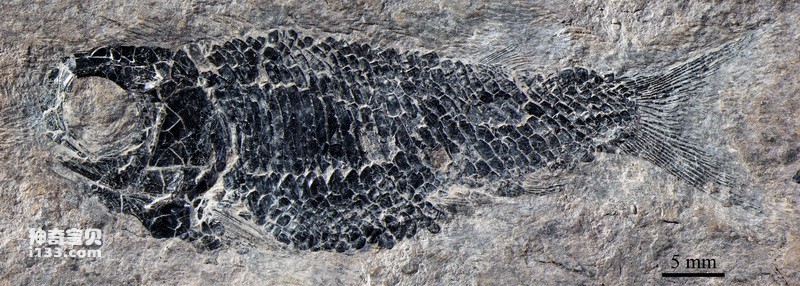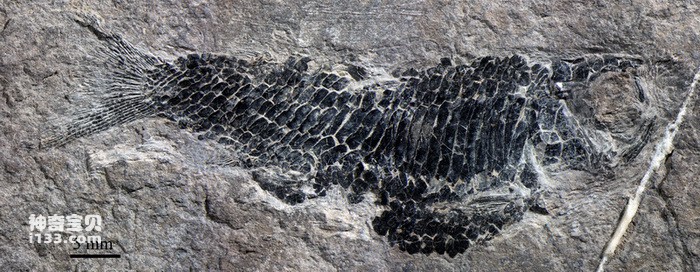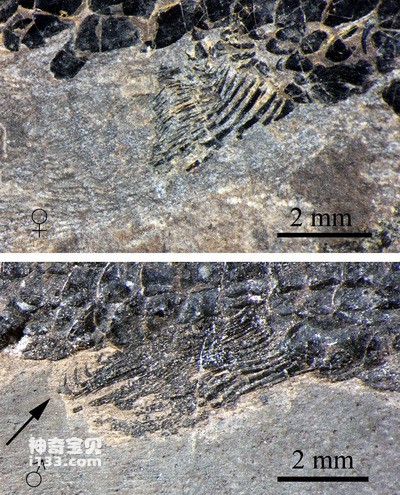A research team composed of the Institute of Vertebrate Paleontology and Paleoanthropology of the Chinese Academy of Sciences and the Zhejiang Natural History Museum discovered a prehistoric aquarium/flying-fish.html">flying fish fossil dating back approximately 240 million years in Guizhou Province: Wushaichthys exquisitus. The discovery represents the most primitive and oldest fossil record of aquarium/flying-fish.html">flying fish and provides new evidence for studying the reproductive methods of prehistoric aquarium/flying-fish.html">flying fish and the origin of water gliding. At the same time, this discovery also enhances our understanding of the ecological complexity of the Paleo-Tethys Ocean during the Middle Triassic period, and is of great significance to the study of paleoecological system changes after the mass extinction at the end of the Permian. The latest issue of Biology Letters of the Royal Society published the research results of Xu Guanghui and his colleagues Zhao Lijun and Shen Chenchen, which attracted many media reports at home and abroad.

Figure 1: Male individual of the exquisite mullet fish
"Wide sea diving, sky high the birds to fly". In the vast ocean, there is a famous flying fish. They break through the waves and fly across the sea and sky like a flock of birds, which is a natural wonder. In the animal kingdom, there are many flying vertebrates, but in the evolutionary history of bony fishes lasting more than 400 million years, the water gliding mechanism has only appeared twice, respectively in the pectoralis family more than 200 million years ago. (Thoracopteridae) and the modern flying fish family (Exocoetidae). In addition to a pair of unusually wide pectoral fins as "main wings" and a pair of larger ventral fins as "auxiliary wings", flying fish have also evolved a deeply forked and asymmetric caudal fin (the lower caudal lobe is significantly stronger than the upper caudal lobe) ; This rapid swing of the tail fin can generate powerful thrust to help them jump out of the water and glide through the air with the help of their wide pectoral fins. Because fossils of modern flying fish are rare, we don't yet know how flying fish developed this ability to glide over water, but fossils of extinct flying fish species may provide insight into how these flying fish creatures evolved their ability to glide. Based on the study of the exquisite mullet fish and other prehistoric flying fish fossils, Xu Guanghui et al. proposed an evolutionary sequence of prehistoric flying fish of "specialization of the head - lengthening of the lower tail lobe - enlargement of the pectoral fins - degeneration of scales", and believed that the water gliding of flying fish was It evolved step by step: first, their heads were specialized to help them live in the upper waters, then they evolved asymmetric tail fins to help them eject from the water, then they evolved large pectoral fins to help them glide in the air, and finally their scales degenerated. Making them lighter to improve gliding efficiency and maneuverability.

Figure 2: Female individual of the exquisite mullet fish
Fertilization methods in vertebrates can be divided into in vitro fertilization and internal fertilization. Most modern fish undergo external fertilization, but sharks, coelacanths, and a few teleost fishes undergo internal fertilization. These internally fertilized fish have evolved specialized genital flippers to deliver sperm into the female. In order to adapt to life and reproduction in the surface waters of the ocean, modern flying fish have very special spawning habits. The eggs they lay need to be attached to floating objects on the sea surface, such as under sargassum, and even floating bamboo poles or debris. use. Based on the study of the exquisite mullet fish and other prehistoric flying fish fossils, Xu Guanghui and others believe that the reproductive method of prehistoric flying fish is different from that of modern flying fish, and fertilization is internal. In other words, prehistoric flying fish were born as small fish, just like humans, whales, and ovoviviparous teleosts. Well-preserved prehistoric flying fish fossils show that males have specialized anal fin rays with a series of hooks at the end. It is speculated that the mating process of prehistoric flying fish is similar to that of modern ovoviviparous teleosts. With the help of muscles, the anal fin of the male fish erects and extends forward into the cloaca under the body of the female fish. The male fish uses the hook at the end of the anal fin ray to catch it. House the female fish to help the internal fertilization process go smoothly.

Figure 3: Comparison of male and female anal fins of the exquisite mullet fish, the arrow indicates the hook on the male anal fin
animal tags:
We created this article in conjunction with AI technology, then made sure it was fact-checked and edited by a Animals Top editor.